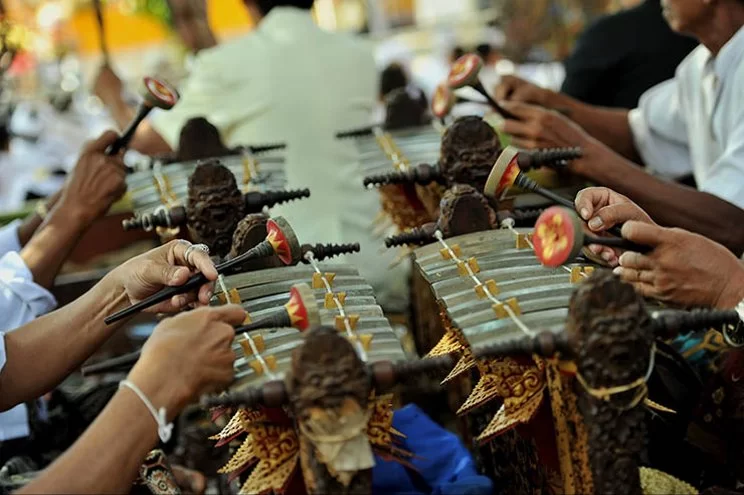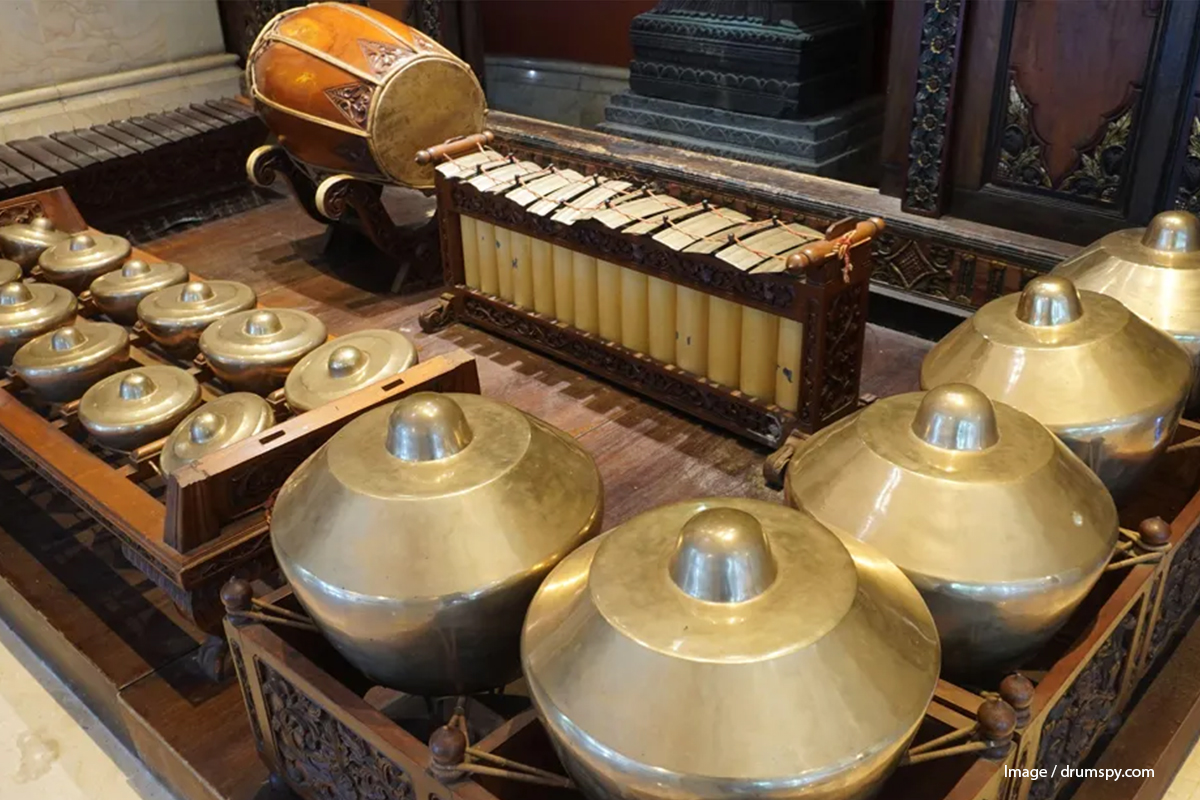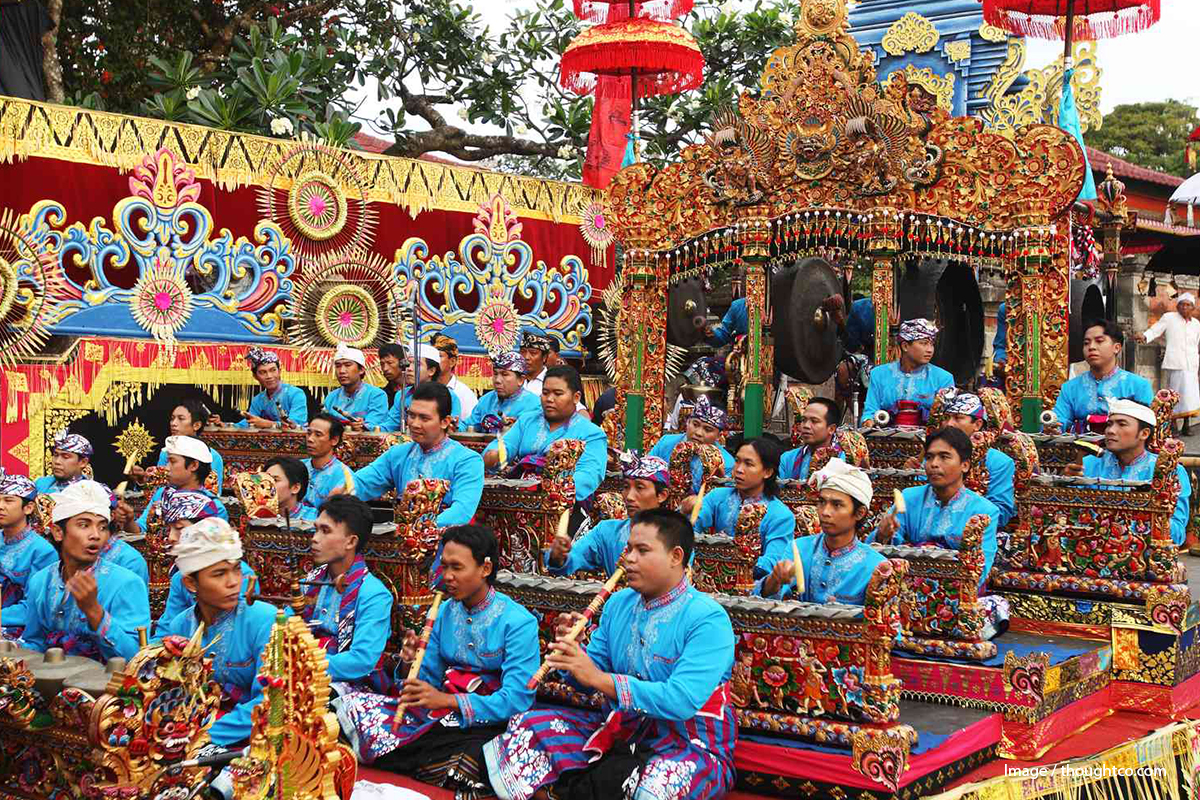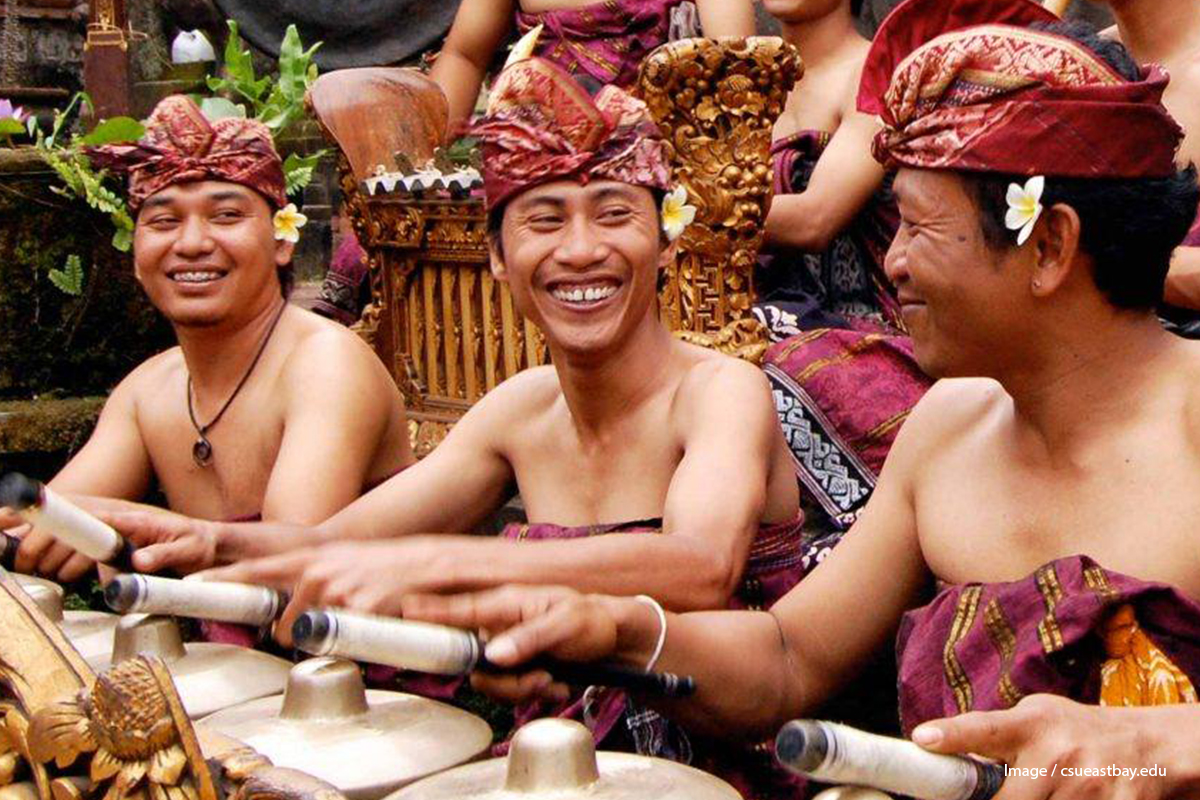Gamelan history
While it’s difficult to pinpoint the exact origin of gamelan, the earliest known records have been traced to the reliefs of Borobudur Temple, which dates back to the 8th-century. Since then, Indonesia’s diverse history has contributed to the variations and interpretations we recognise today, as well as the addition of instruments, including Middle Eastern bow instruments and rhythmic variations, most likely originating from European influences.
In mythology, it is said the gamelan was created by a Javanese mountain god named Sang Hyang Guru from 230 AD, who used the sounds of gongs to summon neighbouring gods—this was the first record of a gamelan set being formed. From around 1293 to 1597, the modern day form of gamelan music came to fruition, as the production of instruments became a possibility. The main historical usage was during the 15th century, where gamelan was utilised to prepare troops for battle.




